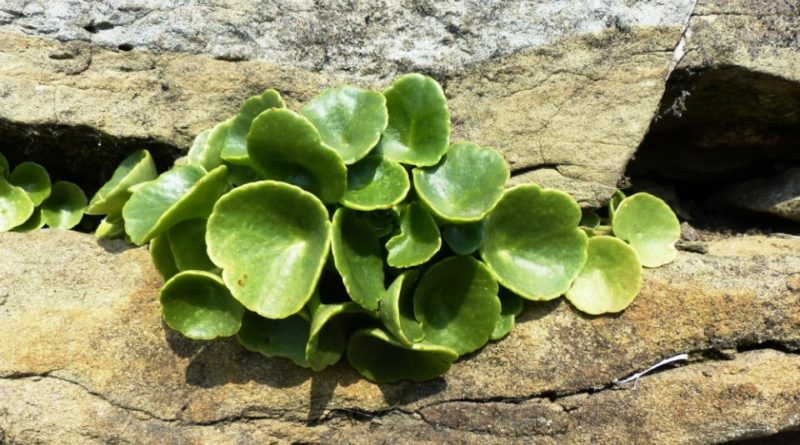Umbilicus horizontalis
Umbilicus horizontalis
The Horizontal navelwort (Umbilicus horizontalis (Guss.) DC.) Is a succulent species belonging to the Crassulaceae family.
Systematic –
From a systematic point of view, it belongs to the Eukaryota Domain, Plantae Kingdom, Magnoliophyta Division, Magnoliopsida Class, Rosales Order, Crassulaceae Family and therefore to the Genus Umbilicus and to the Species U. horizontalis.
The term Cotyledon horizontalis Guss is basional.
The terms are synonymous:
– Umbilicus gaditanus Boiss .;
– Umbilicus luteus auct. Fl. Ital .;
– Umbilicus aetneus Tornab ..
Etymology –
The term Umbilicus comes from umbilicus navel: due to the shape of the centrally depressed leaves, navel-shaped.
The specific epithet horizontalis comes from horizon horizon: prostrate or expanding horizontally.
Geographical Distribution and Habitat –
The Horizontal navelwort is a species with a strictly Mediterranean distribution and which is present in all regions of central, southern and insular Italy.
Its growth habitat is represented by wet rocky substrates, ruderal environments in general or on walls where it lives from the sea level at about 1200 m, with optimum in the Mediterranean belt.
Description –
Umbilicus horizontalis is a succulent, bulbous, glabrous geophyte, 10-50 cm in size.
The stem is erect, sometimes branchy, floriferous, green in color with red undertones. The leaves are a beautiful shiny green; the lower ones with a long petiole and lobed circular lamina, the cauline leaves are sessile, lanceolate, progressively reduced and linear. The flowers are collected in dense racemes, 4-6 mm, horizontal to the stem, yellow-greenish in color, on peduncles shorter than the bracts.
The flowering period runs from March to June.
Cultivation –
The Horizontal navelwort is a spontaneous plant typical of the ruderal areas of the Mediterranean region where it develops mainly in humid environments and with partial solar insolation during the day.
Uses and Traditions –
This plant can be confused with the similar Umbilicus rupestris from which it is however distinguished by the one-sided inflorescence composed of hanging flowers and larger, longer flower peduncles of the brates.
Umbilicus horizontalis is a plant that can have food uses as young, water-rich leaves, which are edible, have diuretic properties and were once used to soothe skin burns.
The used parts of this plant are the soft basal leaves, collected before flowering.
The harvesting period of these goes from October to May and it is recommended, when collecting them, not to tear the plant but to cut only the few leaves useful for consumption.
Preparation method –
The soft basal leaves of Umbilicus horizontalis, collected before flowering, can be eaten fresh in chunks and used in mixed salads.
Guido Bissanti
Sources
– Acta Plantarum – Flora of the Italian Regions.
– Wikipedia, the free encyclopedia.
– Treben M., 2000. Health from the Lord’s Pharmacy, Tips and experiences with medicinal herbs, Ennsthaler Editore
– Pignatti S., 1982. Flora of Italy, Edagricole, Bologna.
– Conti F., Abbate G., Alessandrini A., Blasi C. (edited by), 2005. An annotated checklist of the Italian vascular flora, Palombi Editore.
Warning: Pharmaceutical applications and alimurgical uses are indicated for information purposes only, they do not in any way represent a medical prescription; therefore, no responsibility is accepted for their use for healing, aesthetic or food purposes.


